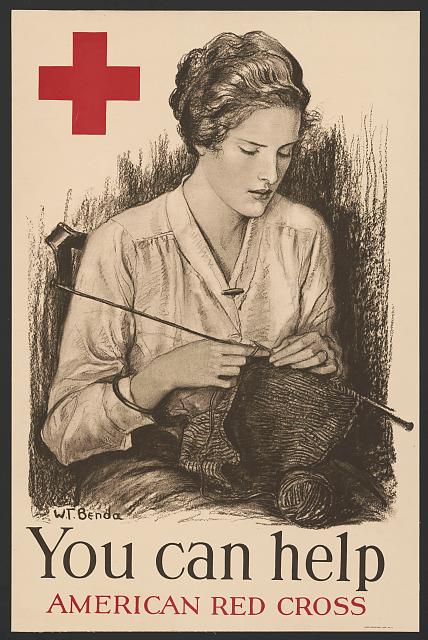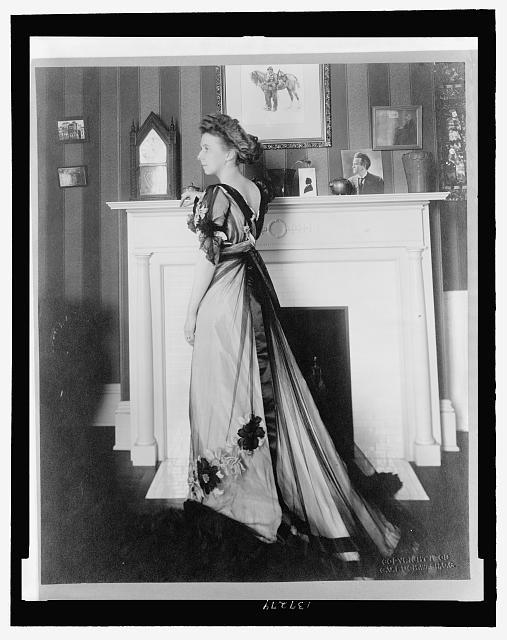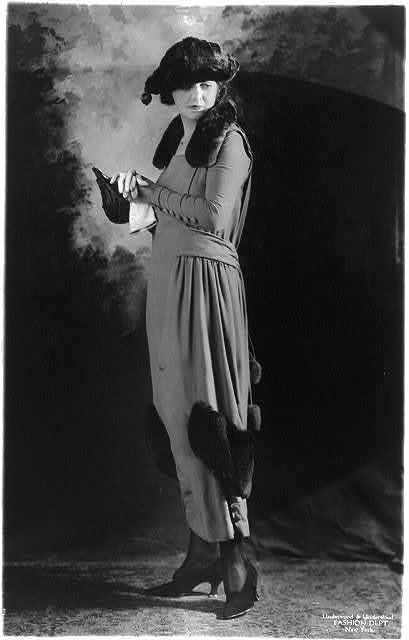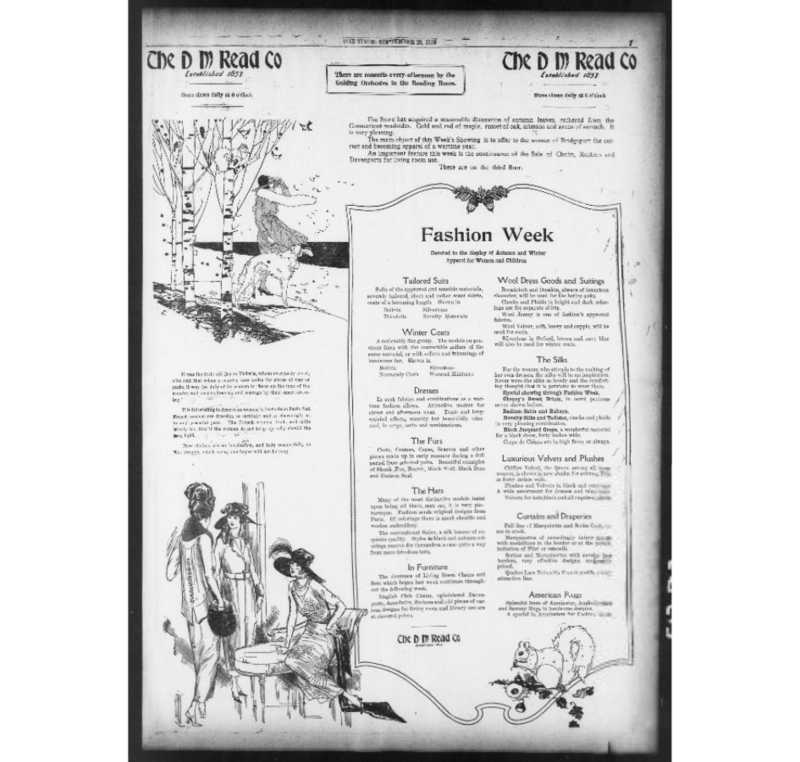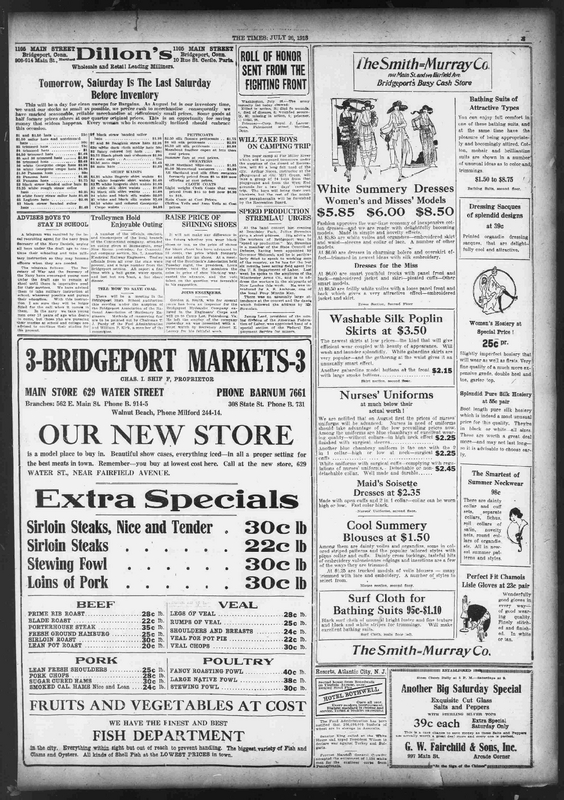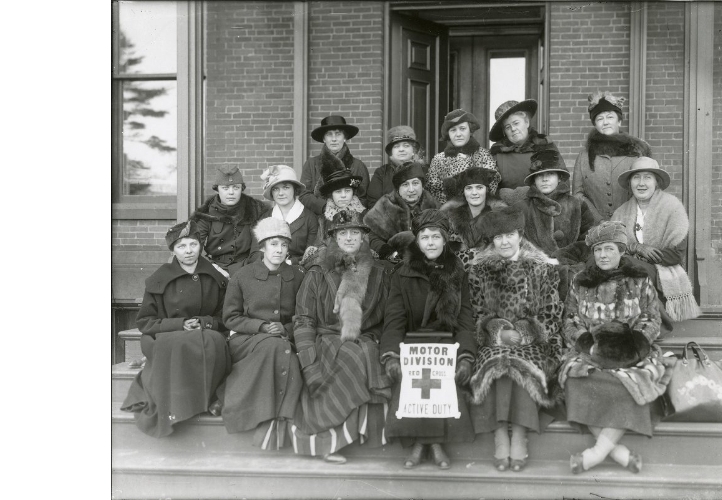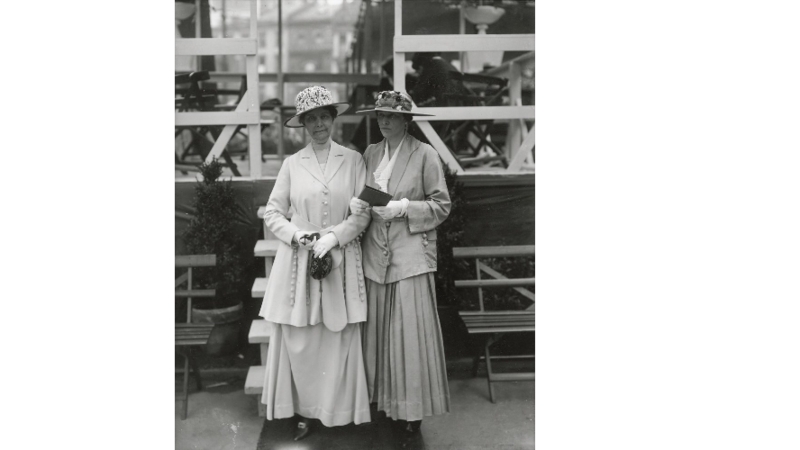War Time Fashion
Before World War I women's dress in the United States reflected who they were, their social status and their age. Upper class women changed their dress four times a day, from day wear to evening wear. Changing their wardrobe took up a lot of time and labor due to the many layers of cloth and the corset underneath. Wearing a corset required an addtinal person to assist with tightening and lacing it up. Young women, over the age of eighteen,wore their hair up in a full style bun. Skirts were floor length and did not show shoes or legs. Seamstresses hand-made the clothing of upper class women which they tailored to fit their individual figures. Women dress styles imitated the Paris fashion houses and often used imported textiles.
Middle class women in the pre-war Era could purchase "ready to wear " clothing made with lesser fabrics and by machines at department stores. Many articles of clothing sold by department stores were mass-produced by immigrant seamstresses in the "sweated industry." These items of clothing imitated the custom-made versions worn by the upper class. The department stores charged lower prices based on lower labor and material cost. However, not everyone could afford the items available in the department stores such as G.Fox in Hartford. For the working class woman, or young girl just starting out, sewing patterns were available to purchase to make their own clothes. An example of this is the shirt waist design advertised by Priscilla designs of Boston, Massachussetts.
With the outbreak of World War I in Europe the fashion from Paris began to change and eventually the actual manufacture of dress and fabric changed. In the beginning of the War in Europe American women tried to support their allies in France by continuing to buy Paris fashions. As the war continued the accessibility of these French fashions and fabrics became more limited.
When the US joined the war in 1917 more radical changes were made in women's clothing styles. War time efforts required manufacturers to be more efficient in the cuts of clothing and type of fabric. Women dress styles were simplified to save on quantities of textiles and certain types of fabrics. Wool became a precious commodiity saved for soldiers uniforms and for knitting socks and sweaters to send abroad. The entry of the US into the conflict altered not only the materials and styles of women's dress but the fashion colors as well. Dark, dull colors such as khaki and black, which mimicked milltary uniforms, became very popular. The greatest changes to women's wardrobes were to daywear and work attire.
Valerie Mendes and Amy de La Haye, Fashion Since 1900:1914-1929 La Garconne and the New Simplicity.
Upper class women "took the reigns" in the Red Cross Motor Division of the Ambulance Corps, trained by the mechanics of the YMCA. They were a group of volunteers who were required to learn the rules of the road and basic mechancis to join the corps. Their charge was to transport persons and goods for the Red Cross and if necessary transport the wounded for the government. In order to stay warm in the frigid weather with open and unheated automobiles they wore long fur coats, mufflers and hats.
New fabrics were introduced to women's clothing. With the elimination of wool for winter clothing a new textile was created to substitue for it. This fabric called Serge,was manufactured "with a warp of worsted and a woolen weft twill cloth." Cotton fabric without pattern was substituted for summer silks.
Women's fashion has less ornament and detail. Pockets were stictched on the exterior of women's skirts and jackets instead of hidden in seams. Jackets were worn longer over the hips and looser fitting with belts wrapped around the waist. Women's waists were no longer emphasized as they had been with corsetted dress. Women's skirts were shorter and showed their shoes. Upper class women in political and social positions in Conectiuct "followed suit" wearing the wartime styles.
